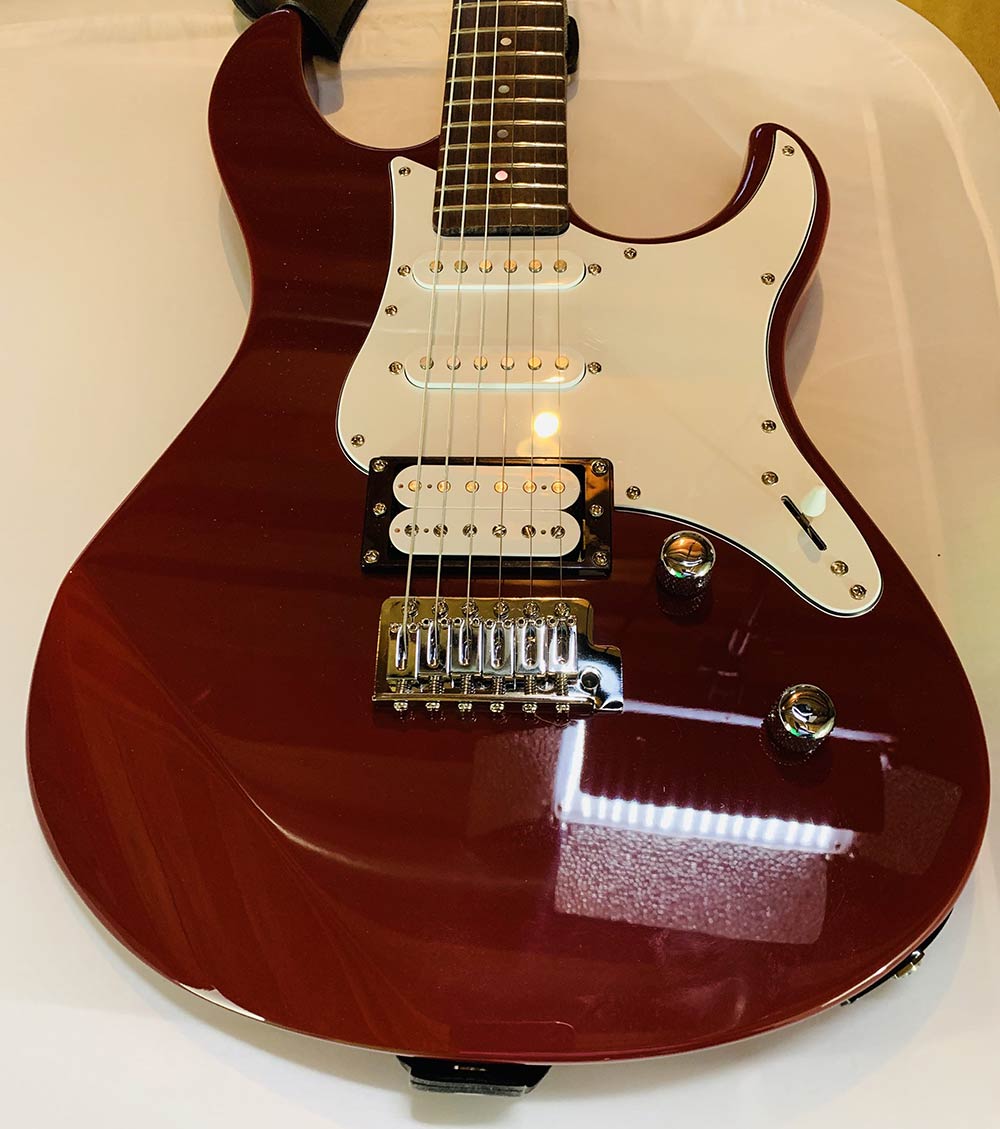
A few weeks ago, I introduced Rocket Yard readers to my new goal — to learn how to play electric guitar. If you read the linked article, you know the “why” of my new hobby. In today’s article, I’ll outline the “how” — in other words, the equipment and methods that I’m using to achieve my goal of learning guitar.
The Guitar
I could have done what a surprising number of newbie guitarists in my age group (60s) like to do, which is to spend a lot of money on a guitar that their rock idol uses. I mean, who wouldn’t want a custom Fender Stratocaster or a 60th Anniversary 1959 Gibson Les Paul Standard? Between limited funds and the thought that it is probably better to get something that reflects my skill level, I began a search for a beginner’s guitar.
One article I found had a list of the 10 Best Electric Guitars for Beginners in 2019, so I read it from end to end (after also picking up some electric guitar terminology) from other sites. There were a wide range of beginner guitars, so I finally focused on what Music Critic picked as its best value for beginners — the Yamaha Pacifica Series PAC112V. It has that classic Stratocaster look and impressive sound (at least to my ears), and in a deep raspberry red, it looks like it’s ready to rock ’n roll!
UPDATE (Feb. 10, 2021): Here’s another really good resource for finding the best electric guitars. It’s an article on the 10 Best Electric Guitar Brands that was published by BeginnerGuitarHQ.
The Amp
No electric guitar is complete without an amplifier, so I began looking around for an amp to go along with my axe. I knew I didn’t need much in terms of power, as I’m certainly not going to be performing at this time — in fact, my wife stated early on that she didn’t want to hear me practicing for hours, so I needed something with a headphone output.
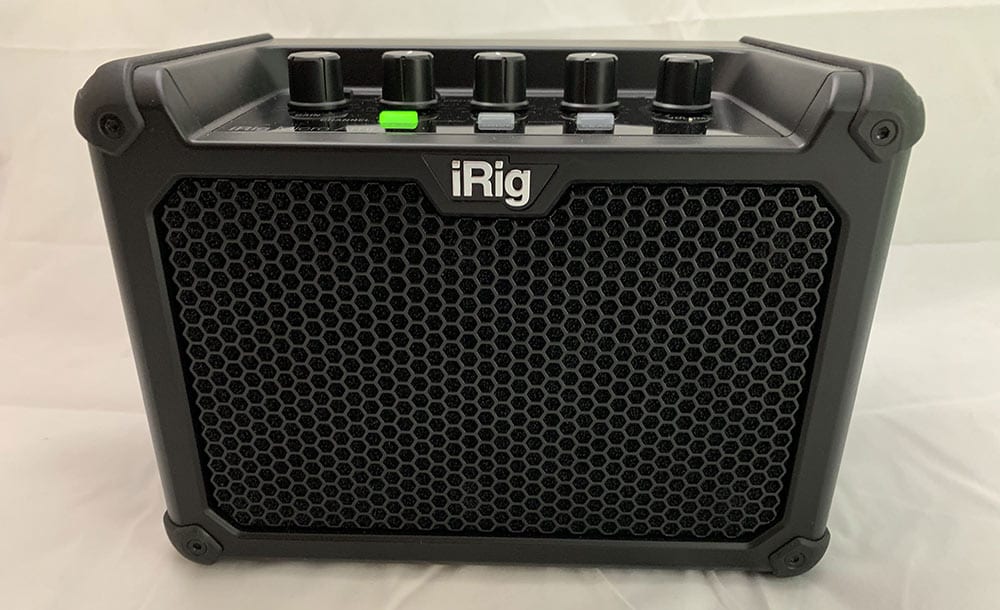
As a tech reviewer, I am quite familiar with the products of IK Multimedia. They’re known for their apps that digitally reproduce the classic sounds of many guitar and amp combos, they make a lot of interface equipment for musicians using Macs, iPhones, and iPads, and they also make some small amps that can connect to a big speaker. Thanks to IK Multimedia, I am using an iRig Micro Amp, which is a small 15W (when using AC) amp that works with many of their apps to produce a wide range of classic sounds.
For the time being, I’m not using any of those apps; I need to learn how to play guitar before I can play with effects. The amp works very well for my purposes and my silent practice is keeping peace in the house.
The Other Guitar
Wait, what? I don’t even know how to play and I have two guitars? Well, I travel a lot and I’m not going to carry my Pacifica and amp with me on the road — not until I have roadies to move the equipment! I wanted something lightweight that I could practice with when I’m on vacation, perhaps a guitar that could fit into a suitcase or backpack easily.
That’s where the Jamstik 7 came into the picture. This is not actually a guitar – it’s a MIDI (musical instrument digital interface) device that looks like a shortened guitar but needs a computer in order to actually produce sound. Jamstik 7 works with a lot of iOS apps, including its own Jamstik and JamTutor apps. While you’ll find in the next section what I’m using as my primary guitar teacher, Jamstik connected to my iPad Pro or iPhone makes a very decent portable training setup.

The small size of the Jamstik setup also gives me the incentive to take breaks from writing to practice a few minutes every hour. The Pacifica and amp are in my basement where I have to make a concerted effort to head down and set up.
Initially I ran into some problems with connecting the Jamstik 7 to my iPad Pro. The manufacturers say that the “best” solution is using a wired connection from the Jamstik to the iOS device and headphones to listen in. Well, there’s no headphone jack on the iPad Pro and it was difficult to find a USB-C to micro-USB cable of the length that I wanted. I was able to use a Bluetooth connection between the Jamstik 7 and iPad Pro with a Satechi Type C to 3.5mm Headphone Jack adapter to listen to the output.
Many thanks to the team at Zivix (the makers of Jamstik) for supplying a Jamstik 7 for this series of articles and to Satechi for rushing the USB-C to headphone adapter.
Fender Play
All the equipment in the world isn’t going to help me if I can’t learn how to play guitar, and what started this entire journey was receiving a press release from Fender Guitars about Fender Play. It’s an online and app-based training curriculum that uses video and exercises to take a non-player to a higher level of capability.
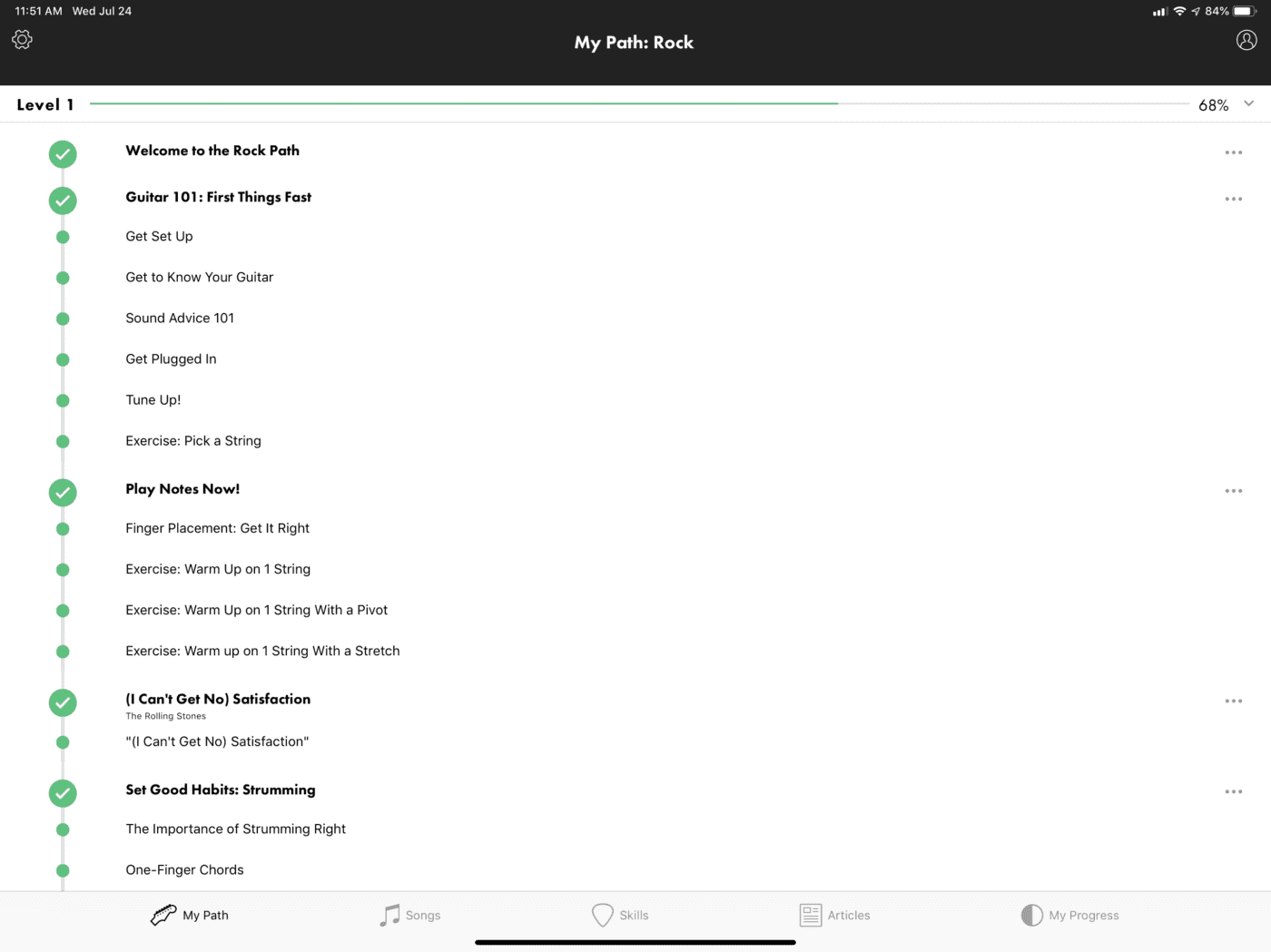
I chose the Rock Electric Guitar Path for my training. There are also paths for Pop, Folk, Country, and Blues Electric Guitar, or the acoustic guitar versions of each of those genres. There is a lot of commonality between the various paths, so as you progress in your chosen path you’re actually moving down the other paths as well.
Each path is divided into Courses that you need to complete, each of which is made up of a number of lessons. There are also skills to learn (like how to pick a string or tune a guitar), and full songs and riffs. At this point, the riffs I’ve learned are the intro to Satisfaction by the Rolling Stones, and Another Brick in the Wall Pt. 2 by Pink Floyd. Only one full song has been hammered into my brain; Waiting in Vain by Bob Marley & The Wailers. It’s pretty simple; just two easy chords.
Within each path are five levels. As a beginner, I’m currently at level 1 and will probably stay there a while until I’ve mastered all of the skills. When that’s done, I still have four more levels to challenge me.
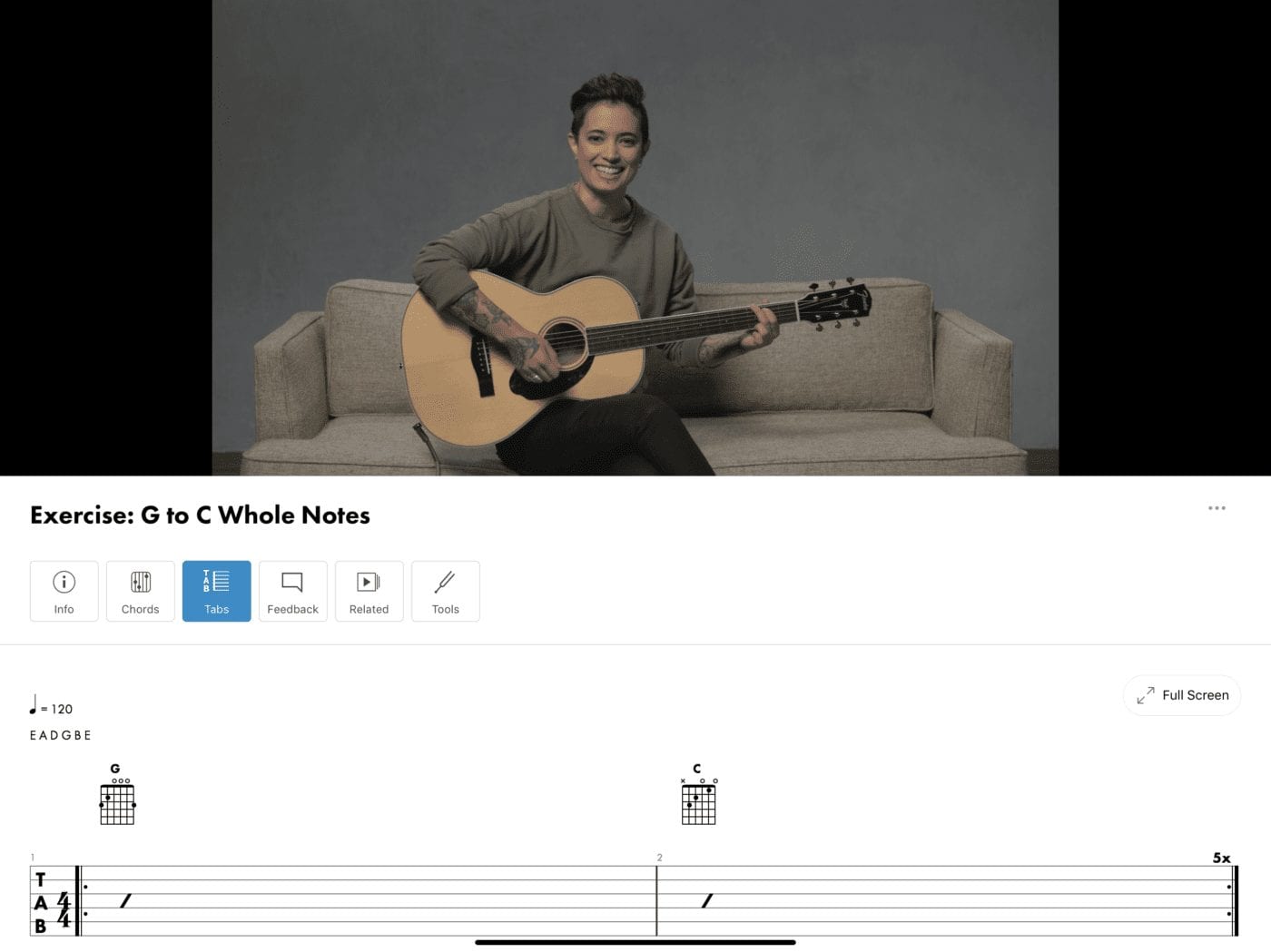
The instructors and videos in Fender Play are wonderful. If I feel like an explanation went by a bit too quickly or a demonstration of performing a specific task went by in a blur, I just back up and watch it again and again until I understand.
Why use an app and web-based course like this instead of just taking live lessons from an instructor or watching free videos on YouTube? A couple of things: getting a human instructor is relatively expensive, ties me to his or her schedule for sessions, and requires that I drive somewhere to take the lesson. There’s also that human factor — I’d rather fumble around and learn at my own pace than have someone judging my progress by their own experience. Next, there are a lot of videos out there that are good, but I’d rather use them as an adjunct to Fender Play when I’m just not understanding a specific point.
Progress
I actually feel pretty good about my progress so far. I’m 68% of the way through Level One of Fender Play in less than a month, I practice almost every day, and I surprise myself when I have a particularly great-sounding practice session. Sure, I will eventually get to a point where I’m “stuck” in terms of progress, but I think what I’ve found so far is that diligent practice definitely helps to work through those tough points — and that’s probably the best incentive to keep practicing.
As I get further along in this musical journey I’ll be sharing additional notes on my progress, along with hints and tips for others who might be inspired to learn guitar.
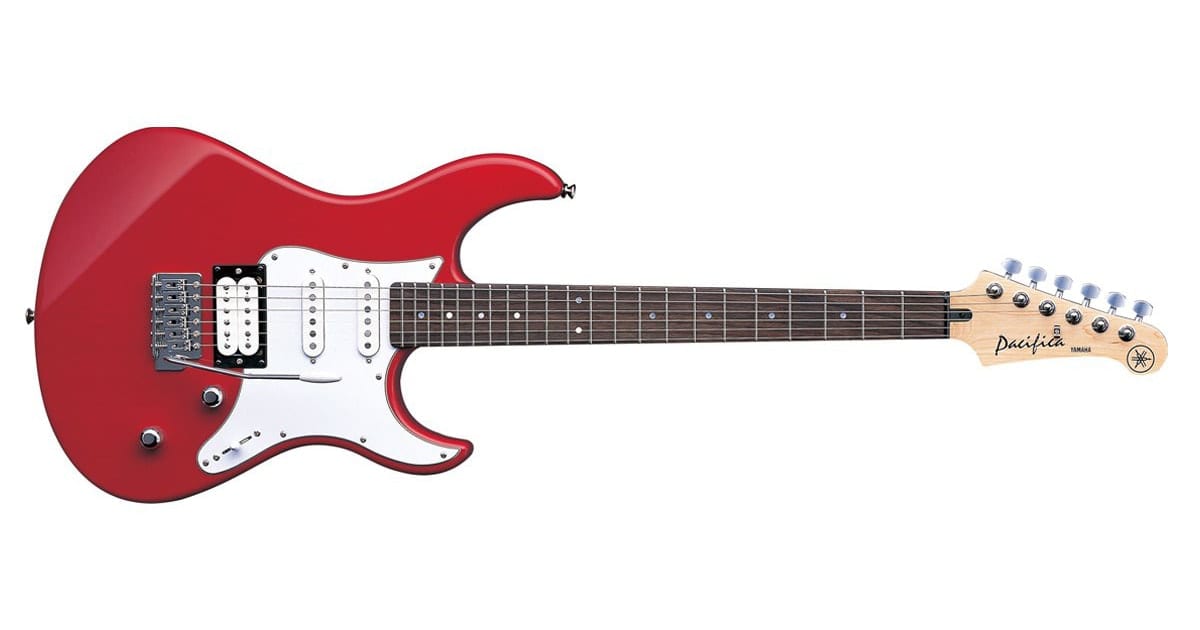








Jamstick seems not to have any software to run it ON your OSX computer. Only “online” which is … useless.
Fender play does not seem to want to reveal the price until after you create an account. Hate that type of marketing, won’t buy.
Enjoying your journey and appreciate all the information. Me included, I’m sure there are tons of people out there with guitar playing aspirations!
Garage Band has free beginner guitar lessons along with some more advanced ones you can buy.
Did you consider that route?
Congratulations on your progress. I’m glad you’re still having fun.
Another option for learning is group lessons. That’s how I originally started playing guitar when I was a kid back in the 70s. That was through some kind of community learning program. Community Colleges often offer guitar classes. A few years ago my friend Vicki decided to take the class at our local CC and talked me into joining her so she’d be less nervous. It ended up being a great experience. There were people of all ages and abilities in the class and everyone was supportive and encouraging. I liked it so much I took it for a second semester.